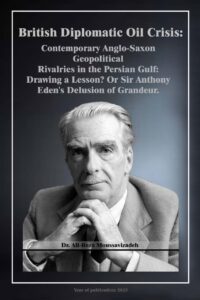The British Imperial Establishment, Post Imperial Era, and the ‘Churchillian’ World View, 1945-2016. (Adjustments & Challenges in Contemporary British Diplomatic Strategy)
4
themselves, had rejected almost two centuries earlier. In order to protect their
interests from simple
decline or from seizure by the U.S.A or U.S.S.R. , the
British political elite took a new approach and
retreated from their direct control.
This was largely completed by 1963. This new approach had, in fact,
begun in
1942, as Chapter Six of this thesis will show. However, from 1945, after the
Second World War,
until 1963, this strategy was followed in an accelerated and
disciplined manner. The new policy that the
decision-makers had come up with
was to safeguard British interests by a diffused method of control. This is
to say
that the ex-colonies were given full political independence, but were encouraged
to hold the old
ties together in the face of a dangerous world. They became the
Modern Commonwealth, with the British monarch
as its head.
In this book attempts will
be made to examine how the British political
elites managed to protect British interests i.e. economic and
strategic (and hence
her leading role), through the Modern Commonwealth, and what holds together
this
institution of sovereign countries, which is a collection of ex-colonies having
thrown off the imperial
yoke.
Moreover, we shall try to
establish how this was achieved in the face of the new
and changing situation of demands and pressures for
decolonisation. We shall
more broadly examine how the British political elite sought to protect
British
world power and influence under the circumstances of the ending of the empire,
i.e. the foreign and defence policies that were
pursued and the reasons for them.
As we
have noted, the British Empire had been facing various pressures
even before the Second World War. By the end
of the nineteenth century the
British Empire started to face challenges. It is essential to note that
‘British’
imperial power, apart from the United Kingdom’s power, was also as a result of
the
contributions that various countries within the Empire had made. For
example, as the book will show, during
the First World War, Australia, Canada,
India and New Zealand sent 2.5 million troops to fight alongside 5
million British
troops.
Pages: 1 2 3 4 5 6 7 8 9 10 11 12 13 14 15 16 17 18 19 20 21 22 23 24 25 26 27 28 29 30 31 32 33 34 35 36 37 38 39 40 41 42 43 44 45 46 47 48 49 50 51 52 53 54 55 56 57 58 59 60 61 62 63 64 65 66 67 68 69 70 71 72 73 74 75 76 77 78 79 80 81 82 83 84 85 86 87 88 89 90 91 92 93 94 95 96 97 98 99 100 101 102 103 104 105 106 107 108 109 110 111 112 113 114 115 116 117 118 119 120 121 122 123 124 125 126 127 128 129 130 131 132 133 134 135 136 137 138 139 140 141 142 143 144 145 146 147 148 149 150 151 152 153 154 155 156 157 158 159 160 161 162 163 164 165 166 167 168 169 170 171 172 173 174 175 176 177 178 179 180 181 182 183 184 185 186 187 188 189 190 191 192 193 194 195 196 197 198 199 200 201 202 203 204 205 206 207 208 209 210 211 212 213

